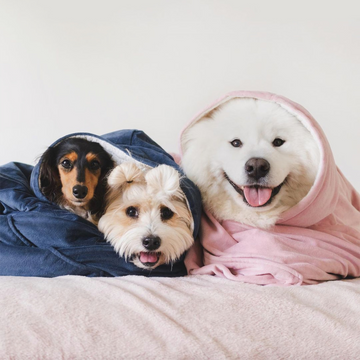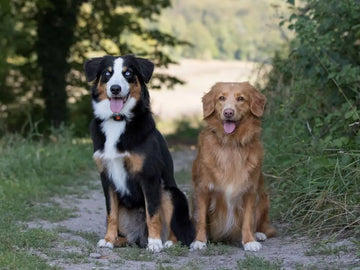Potty training a puppy can be a challenging but rewarding journey for every dog owner. While it might feel overwhelming at first, the process becomes much smoother when you know what mistakes to avoid. Many new pet owners unknowingly make errors that can slow down their puppy’s progress and lead to frustration. By steering clear of these common pitfalls, you can make potty training a positive experience for both you and your furry friend.
In this article, we’ll dive into the five most common mistakes puppy owners make when potty training and offer actionable solutions to help you succeed. Whether you’re a first-time pet parent or an experienced dog lover, these tips will help you train your puppy efficiently and with minimal stress. Let’s get started!
Mistake 1: Starting Too Late
One of the biggest mistakes new pet owners make is delaying the start of potty training. Puppies are like little sponges—their brains are primed to absorb new habits and routines during their early weeks of life. Waiting too long to begin potty training can lead to bad habits forming, which may be difficult to break later.
Why It’s a Problem:
Puppies are most adaptable and ready to learn during their first few months. If you miss this crucial window, your puppy might develop inconsistent potty habits, making training more challenging down the road.
Solution:
Start potty training as soon as your puppy comes home. Create a consistent routine that includes scheduled potty breaks, especially after meals, naps, and playtime. Puppies need frequent bathroom breaks because their small bladders can’t hold much. If you’re proactive and patient, your puppy will quickly catch on to the routine.
Mistake 2: Inconsistent Schedule
Consistency is the cornerstone of successful potty training. Many pet owners unintentionally create confusion by not sticking to a regular schedule. Puppies thrive on routine, and a lack of structure can make it difficult for them to understand what’s expected.
Why It’s a Problem:
When potty breaks, feeding times, and playtimes are irregular, your puppy may struggle to predict when it’s time to go potty. This inconsistency often leads to accidents in the house and can prolong the training process.
Solution:
Establish a strict daily routine that includes consistent meal times, potty breaks, and play sessions. Take your puppy outside first thing in the morning, after every meal, after naps, and before bedtime. For those times when you’re busy, consider using dog potty pads as a temporary solution to prevent accidents indoors. Over time, your puppy will associate these consistent potty breaks with the act of going to the bathroom in the appropriate place.
Mistake 3: Not Supervising Your Puppy
When potty training, constant supervision is essential. Puppies are curious and can easily get into trouble when left unsupervised. Many accidents happen simply because pet owners aren’t watching their puppy closely enough to catch the signs that they need to go outside.
Why It’s a Problem:
Unsupervised puppies often relieve themselves wherever they happen to be, reinforcing the habit of going potty indoors. These accidents not only delay the training process but can also lead to unpleasant odors and extra cleaning.
Solution:
Keep your puppy in sight at all times during the potty training phase. Use baby gates or playpens to limit their access to certain areas of your home. If you can’t supervise them, consider crate training. Crates can be a helpful tool because puppies instinctively avoid soiling their sleeping area. This teaches them to hold their bladder until they’re let outside. Don’t forget to stock up on dog cleaning supplies—accidents are bound to happen, and having the right products on hand will make cleanup quick and easy.
Mistake 4: Punishing Accidents
It’s natural to feel frustrated when your puppy has an accident indoors, but punishment is one of the worst ways to respond. Unfortunately, many pet owners resort to scolding, yelling, or other forms of punishment, thinking it will teach their puppy a lesson. In reality, it often does more harm than good.
Why It’s a Problem:
Punishment can scare your puppy and damage the bond you’re building with them. It may also make them fearful of relieving themselves in front of you, leading to sneaky behavior like hiding when they need to potty. This can make potty training even more difficult.
Solution:
Instead of punishing accidents, focus on positive reinforcement. Praise and reward your puppy every time they go potty in the right spot. Use treats, toys, or verbal praise to reinforce the behavior you want. If you catch your puppy in the act of having an accident indoors, gently interrupt them and immediately take them outside to finish. Over time, they’ll learn that going outside leads to rewards and positive attention.
Mistake 5: Expecting Immediate Results
Potty training takes time, and many pet owners become frustrated when their puppy doesn’t seem to catch on immediately. Unrealistic expectations can lead to disappointment and make the process feel harder than it needs to be.
Why It’s a Problem:
Each puppy is different, and some may take longer to fully understand potty training than others. Expecting overnight success can lead to unnecessary stress for both you and your puppy, and may even cause you to give up on consistent training.
Solution:
Be patient and celebrate small wins along the way. Remember, potty training is a process that requires time, consistency, and positive reinforcement. Set realistic expectations and acknowledge progress, even if it’s slow. With patience, your puppy will eventually master the art of potty training.
Bonus Tip: Understanding Your Puppy’s Signals
Learning to recognize your puppy’s signals is a game-changer for potty training. Every puppy has subtle signs that indicate they need to go to the bathroom, such as sniffing the ground, circling, whining, or heading toward the door.
Why It’s Helpful:
By identifying these signals early, you can prevent accidents before they happen and take your puppy outside in time. This reinforces the habit of going potty in the correct location.
What You Can Do:
Pay close attention to your puppy’s behavior, especially after meals or naps. Over time, you’ll learn their unique signals and be able to respond proactively. Having the right pet supplies, such as a leash and waste bags, ready to go will make these quick trips outside more convenient.
Final Thoughts
Potty training your puppy doesn’t have to be a stressful experience. By avoiding these five common mistakes—starting too late, having an inconsistent schedule, failing to supervise, punishing accidents, and expecting immediate results—you’ll set your puppy up for success. Remember, the key to effective potty training is patience, consistency, and positive reinforcement.
Accidents are a normal part of the learning process, so don’t be discouraged if progress feels slow at times. With the right approach, a little extra effort, and the help of essential dog cleaning supplies, you’ll soon have a well-trained puppy who knows exactly where to go. So, stay the course and celebrate every small milestone along the way—your furry friend will thank you for it!
Frequently Asked Questions (FAQ)
1. How long does it take to potty train a puppy?
Potty training typically takes several weeks to a few months, depending on your puppy’s age, breed, and temperament. Consistency and patience are key to faster results.
2. Can I use potty pads for indoor training?
Yes, potty pads can be a helpful tool, especially for apartment dwellers or when outdoor access is limited. Gradually transition your puppy from using potty pads to going outside as they grow more reliable.
3. What should I do if my puppy has an accident indoors?
Stay calm and avoid punishment. Clean the area thoroughly with dog cleaning products to eliminate odors that might attract your puppy to the same spot. Take your puppy outside immediately to reinforce the correct behavior.
4. How often should I take my puppy outside to potty?
Young puppies should be taken out every 1-2 hours, as well as after meals, naps, and playtime. As your puppy matures, they’ll be able to hold their bladder for longer periods.
5. Is crate training necessary for potty training?
Crate training is not mandatory, but it can be a helpful tool. Puppies naturally avoid soiling their sleeping area, so a crate can teach them bladder control and help prevent accidents when you’re unable to supervise them.
6. What are the best pet supplies for potty training?
Some must-have pet supplies include a sturdy leash, waste bags, potty pads, and enzymatic cleaners for cleaning up accidents. These tools will make potty training more efficient and less stressful.










